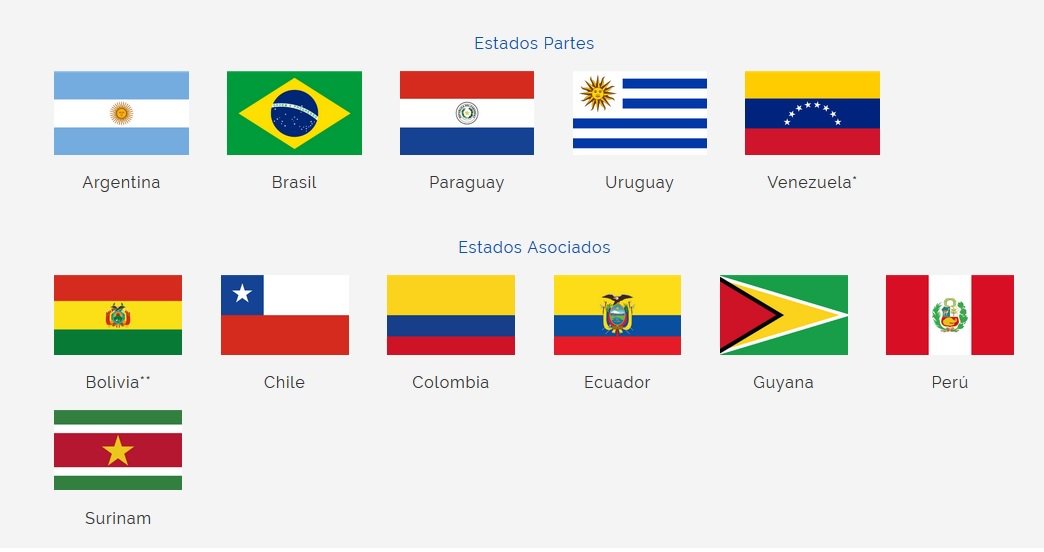The founding members of this region were Brazil, Paraguay, Uruguay, and Argentina. In December 2013 Venezuela was later recognized as a full member. However, due to human rights violations in Venezuela, it has been suspended of its participation since 2016. Bolivia began the process to become a state member in 2015. (MERCOSUR, 2015) Also, only those members of ALADI may apply for such “accession” to the Treaty of Asunción (i.e. as a full member), and for that purpose, they must submit a written request to the Common Market Council. (Fernández Reyes, J. A., 2013)
Besides, there are other kinds of states called “associated states” which are those ALADI members that have MERCOSUR free trade agreements and they are being considered as associated members. They are allowed to participate in MERCOSUR meetings which are about topics of common interest. Likewise, the associated states may also be those countries with which MERCOSUR concludes agreements under Article 25 of the 1980 Montevideo Treaty, which are agreements with other States or areas of economic integration in Latin America. The associated states are Colombia, Peru, Chile, Ecuador, Guyana, and Suriname. (MERCOSUR, 2015)

(MERCOSUR, n.d.)
References:
Fernández Reyes, J. A., (2013). The associated States of MERCOSUR. Revista Via Iuris, (14), pp. 129-132. Retrieved from
https://dialnet.unirioja.es/servlet/articulo?codigo=4707836
MERCOSUR (2015) Mercosur: estructura y agendas. [PDF file] Secretaría del Mercosur. Retrieved from https://www.mercosur.int/media/publicaciones/?cp_71=2#
MERCOSUR (n.d.) Mercosur: Un lugar para vivir. [PDF file] Secretaría del Mercosur.
Retrieved from https://www.mercosur.int/media/publicaciones/?cp_71=2#
MERCOSUR (n.d) Países del MERCOSUR. Retrieved from
https://www.mercosur.int/quienes-somos/paises-del-mercosur/
Telesur Videos. (2015, July 16). Mercosur: países miembros [Vídeo filed]. Retrieved from
https://videos.telesurtv.net/video/415941/mercosur-paises-miembros/
Comments
Post a Comment